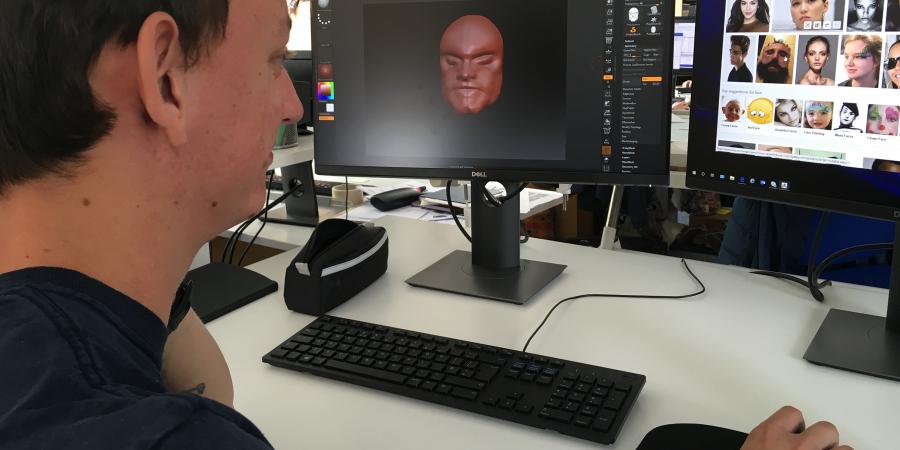I am currently studying BA Drawing at Falmouth University, having just completed my first year. I have always had an interest in history and prehistory, so the idea of a career in Archaeological Illustration really appealed to me, allowing me to combine two of my passions. Wessex Archaeology was kind enough to allow me a week’s work experience in the Graphics department. This provided me with an invaluable insight into how drawing is used in a professional context.
I arrived on Monday morning and was greeted by Rob Goller, Senior Graphics Officer, who gave me a tour of the offices and explained what they did at Wessex Archaeology. I brought some of my own drawings along for feedback and Rob gave me some advice on how to improve them. After a talk about Archaeological Illustration and its conventions, I was given a Roman pottery sherd to illustrate. After I completed this, we went to see Elina Brook, the Senior Finds Specialist. She gave us a very insightful talk about pottery, with contagious enthusiasm. I was given a sherd of Middle Neolithic pottery to illustrate. It was highly decorated with thumbnail impressions and other patterns. This was much more difficult to illustrate and took me a long time, however it was made easier by having the other illustrators being on hand to answer my many questions.
On Wednesday, Jennie came down from their Bristol offices to spend the day with me and talk me through archaeological reconstruction. This was very fascinating and something I thoroughly enjoyed. Archaeological Illustration is very strict and while some artistic decisions can be made, the result needs to be a factual representation of the artefact. Reconstruction allows for a little more artistic licence, but all decisions still need to be backed up with strong evidence. I spent a lot of time drawing digitally on Pro-Create on an iPad, a contrast to my normal traditional drawing methods. Jennie talked me through how decisions are made, what the images are used for and gave me a brief. I was to draw an image of someone making the Neolithic pot I was previously illustrating.
Thursday was spent carrying on with finds illustration, finishing the Neolithic pot and then illustrating a piece of Roman worked bone, which has different conventions to pottery. Nancy was very helpful in talking me through the process.
Friday was spent with Will Foster, Graphics Officer, who talked me through how 3D modelling is used in archaeology. This was another thoroughly enjoyable day which demonstrated how cutting-edge archaeology can be. Will taught me some basic functions on Z Brush and I was able to create a human head. This was particularly invaluable as I wouldn’t have had access to this programme otherwise. Will also showed me his portfolio that he used to apply for his job and gave me some fantastic career advice. I also spent time with Graphics Officer Ken Lymer, who specialises in Photogrammetry. He was very busy but still took the time to thoroughly explain how Wessex Archaeology uses photographs to build an accurate, 3D representation of an object or even an entire site. This can then be used to 3D print an exact replica of the object, without disturbing the original.
I am extremely grateful for the experience that the team at Wessex Archaeology gave me. I was warmly welcomed and despite being exceptionally busy, everyone was more than happy to share their knowledge and passion with me. It was an inspiring and valuable experience which will help with my degree and future career decisions.
By Lee Bates, Student
